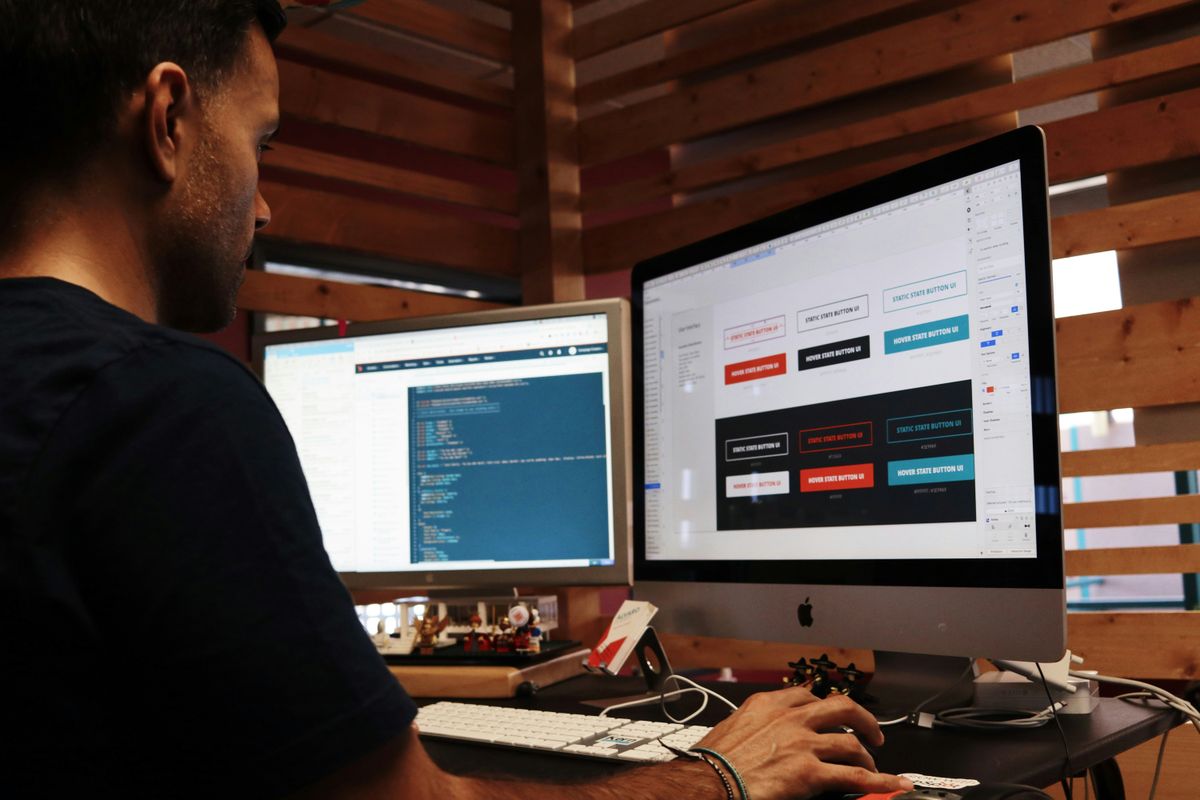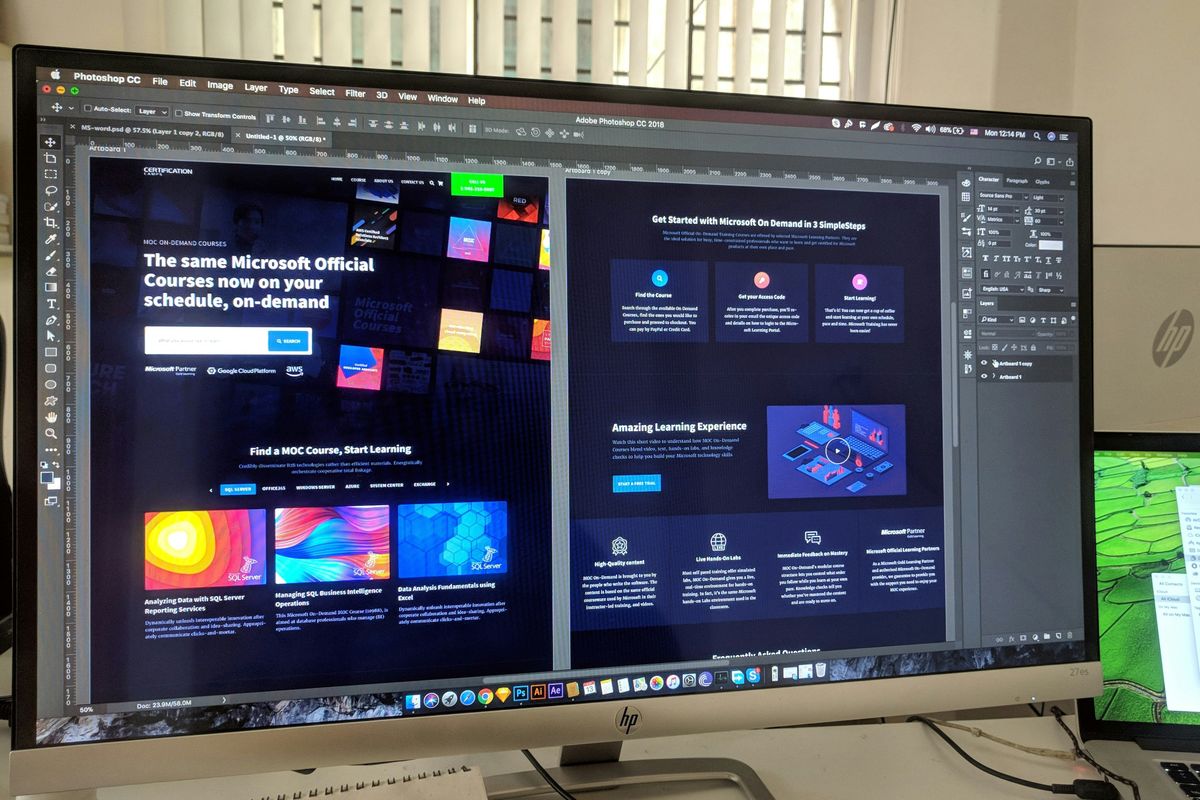Web Design
Social Swarm Marketing Blog
Sep 9, 2024
Craft a sleek, user-friendly website to stand out in the competitive tech startup scene. First impressions matter—engage users and attract investors with intuitive design and clear navigation.
Why Web Design Matters for Tech Startups
Web design isn't just about looking good; it's about making a powerful first impression and driving business success. For tech startups, a killer website can be the difference between attracting investors and users or getting lost in the noise.
Startups face a competitive landscape. Standing out with a well-designed, professional site isn’t optional; it's crucial. Your website is often the first interaction potential investors and users have with your brand. A sleek, fast, and user-friendly site can establish credibility and trust instantly.
Think about it. When you land on a cluttered, slow website, what's your first impression? Probably not great. Your site needs to be the exact opposite: clean, fast, and intuitive. This not only grabs attention but keeps users engaged.
First Impressions Matter: Your site is often the first touchpoint for users and investors. Make it count.
User Engagement: A well-designed website offers a seamless user experience, keeping visitors on your site longer.
Credibility: A professional, high-quality website builds trust and credibility with your audience.
Competitive Edge: In a crowded market, a standout website can set you apart from competitors.
A great website isn’t just about aesthetics; it’s a tool for growth. It can boost user engagement, improve conversion rates, and enhance brand credibility. For tech startups, this translates to better visibility, more users, and increased investor interest.
Know Your Audience
Understanding your audience is crucial for tech startups. Knowing who you're designing for influences every decision you make. User expectations and preferences should guide your design choices, ensuring your website resonates with the right people.
Research is key. Dive deep into demographics and user behavior. Who are your potential users? What are their pain points? What kind of experience are they looking for? This insight helps create a user-centric website that meets their needs.
Create detailed user personas. These are fictional characters representing your ideal users. Include specifics like age, job title, tech proficiency, and personal interests. This helps you visualize who you're talking to and tailor your design accordingly.
Understand User Expectations: Know what your users want and expect from your website.
Analyze Demographics: Study age, location, profession, and other demographic factors.
Observe User Behavior: Track how users interact with similar platforms.
Develop User Personas: Create fictional profiles to represent different segments of your audience.
For a deeper dive into creating effective user personas, you can explore our comprehensive guide on mastering user research and personas. This guide details various qualitative and quantitative methods such as surveys, interviews, and observations, which are essential for understanding user needs.
Adapt your design to match these personas. If your audience is tech-savvy, they’ll expect a sleek, modern interface. If they’re less proficient with technology, prioritize simplicity and ease of use.
User personas guide everything from layout to content. They ensure every design element speaks directly to your audience, making your site more engaging and effective. A user-centric website is not just about looking good; it’s about delivering an experience that feels tailored to each visitor.
Core Elements of Web Design for Tech Startups
Effective web design is crucial for tech startups aiming to make a mark. Successful websites share common features that enhance user experience and drive conversions.
Clean and Intuitive Navigation
Your website’s navigation should be straightforward. Users should find what they need quickly without unnecessary clicks. A clear menu structure helps keep visitors engaged and reduces bounce rates. For more insights on improving user experience through navigation, check out our article on boosting website conversions with simple design tips.
Responsive Design for Mobile Devices
Most users access websites from mobile devices. Ensuring your site is mobile-friendly isn’t optional—it’s essential. Responsive design adapts to various screen sizes, providing a seamless experience whether users are on a phone, tablet, or desktop. To learn how to create a professional business website that is mobile-responsive, our no-code guide for startups offers valuable insights.
Fast Loading Times
Nobody likes waiting. Slow websites lose visitors. Aim for lightning-fast loading times. This keeps users on your site and improves search engine rankings. Speed matters for user satisfaction and SEO.
Clear Call-to-Actions (CTAs)
CTAs guide users towards desired actions, like signing up for a newsletter or making a purchase. They should be prominent and concise. Use action-oriented language to encourage clicks.
Strong Branding and Visual Identity
Consistent branding builds trust. Your website should reflect your startup’s personality and values. Use a cohesive color scheme, typography, and imagery. Strong visual identity helps differentiate your brand from competitors.
Examples
Intuitive Navigation: Simple menus with clear labels.
Mobile Responsiveness: Fluid layouts that adjust to any device.
Fast Loading: Optimized images and minimal plugins.
Effective CTAs: Buttons like “Get Started” or “Learn More.”
Consistent Branding: Unified color palette and logo placement.
Implementing these core elements ensures your website not only looks good but performs well. It keeps users engaged, builds credibility, and drives conversions. For tech startups, these features are non-negotiable for online success.

Crafting a Content Strategy
Crafting a content strategy isn't just about writing words on a page. It's about creating relevant, high-quality content that connects with your audience. Balancing technical info with readability is key. Your content should be informative but also easy to digest.
Regular updates are essential. Fresh content keeps your site engaging and improves SEO. Search engines love new content, and so do your users. Regular blog posts, news updates, or even new product features can keep your site looking fresh and dynamic.
Content tells your brand's story. It's an opportunity to showcase what makes your startup unique. Share your vision, mission, and the journey so far. Use storytelling to create an emotional connection with your audience.
Best practices for compelling web copy:
Be Clear and Concise: Get to the point quickly.
Use Active Voice: Keep sentences direct and engaging.
Include Keywords Naturally: Help with SEO without sounding forced. For more on how to balance SEO techniques with valuable content, check out our guide on boosting rankings through SEO copywriting.
Break Up Text: Use headings, bullet points, and short paragraphs to make content scannable.
Incorporate Multimedia: Use images, videos, and infographics to support your text.
Multimedia storytelling adds depth. A picture can say a thousand words, and a video can say even more. Use these tools to enhance your content, making it more engaging and interactive.
A strong content strategy supports the overall user experience. It makes your website not just a place to visit, but a destination. It informs, engages, and converts visitors into loyal users or investors.
Optimizing User Experience (UX)
User experience (UX) is everything. Get it right, and users will stick around. Mess it up, and they’re gone.
Start by simplifying user journeys. Keep navigation straightforward. Don’t make users hunt for what they need. Clear menus and logical flow make a big difference.
User testing is crucial. Gather feedback early and often. Real users will spot issues you might miss. Make adjustments based on their input. This iterative process ensures your site meets user expectations.
Integrate user-friendly interfaces. Think about the design from the user's perspective. Are buttons easy to find and click? Is the text readable? Are actions intuitive? A user-friendly interface enhances satisfaction and engagement. For more insights on creating excellent user experiences, you can explore our detailed guide on how to create an excellent user experience.
Simplify Navigation: Keep menus clear and logical.
Prioritize Load Times: Fast sites keep users happy.
Responsive Design: Ensure the site looks great on all devices.
Clear CTAs: Make actions obvious and easy.
Avoid common UX pitfalls. Cluttered layouts confuse users. Slow loading times frustrate them. Ignoring mobile optimization alienates a large user base. Don’t overdo animations and effects; they can distract and slow down your site.
User experience isn’t just about looks. It’s about functionality and ease of use. By focusing on these areas, your tech startup can create a website that users love and keep coming back to.
Staying Ahead with Web Design Trends
Tech startups need to stay on top of the latest web design trends to remain competitive. These trends not only make your website look modern but also improve user experience and engagement.
Minimalist design is all about simplicity. Clean lines, ample white space, and a focus on essential elements help users navigate your site easily. It creates a sleek, professional look that’s both functional and visually appealing.
Dark mode is another trend gaining traction. It reduces eye strain for users and gives your site a stylish, contemporary feel. Plus, it can help save battery life on mobile devices, making it a practical choice.
AI and machine learning integrations are revolutionizing how websites interact with users. Chatbots, personalized content, and intelligent search functions can enhance user experience by offering tailored solutions and support. These technologies make your website more engaging and responsive to user needs. For more insights on how animated UI and engaging UX can elevate user experience, check out our complete guide to boosting your website.
Voice search optimization is becoming increasingly important. As more users turn to voice-activated devices, ensuring your site is optimized for voice search can help you reach a broader audience. This involves using natural language keywords and ensuring your content answers common voice queries effectively.
Key trends to follow:
Minimalist Design: Focus on simplicity and essential elements.
Dark Mode: Offer a modern, eye-friendly alternative.
AI and Machine Learning: Integrate chatbots and personalized content.
Voice Search Optimization: Tailor content for voice-activated searches.
Successful implementations of these trends include companies like Apple, which uses minimalist design to create intuitive, user-friendly interfaces. Netflix leverages AI to provide personalized content recommendations, enhancing user engagement and satisfaction.
Adopting these trends can keep your website ahead of the curve. They not only make your site look good but also improve functionality and user experience, helping your startup stand out in a crowded market.

Key Takeaways for Tech Startups
Web design is pivotal for tech startups. A well-crafted website can attract investors, engage users, and establish market presence.
Summing up the essentials:
First Impressions Matter: Your website is often the first touchpoint for users and investors. Make it count.
User Engagement: A seamless user experience keeps visitors on your site longer.
Credibility: A professional, high-quality website builds trust and credibility.
Competitive Edge: Stand out with a standout website.
Core design elements like clean navigation, responsive design, fast loading times, clear CTAs, and strong branding are non-negotiable.
A solid content strategy is crucial. Update regularly, keep content relevant and engaging, and use multimedia to enhance storytelling.
Optimizing user experience is key. Simplify navigation, prioritize load times, ensure responsive design, and make CTAs clear.
Stay updated with web design trends. Minimalist design, dark mode, AI integrations, and voice search optimization are trends worth following.
By implementing these practices, tech startups can boost user engagement, increase conversion rates, and drive business success. Keep evolving your web design to meet changing user expectations and technological advancements.
A great website isn't static. Continual improvement and adaptation are essential for long-term success.












